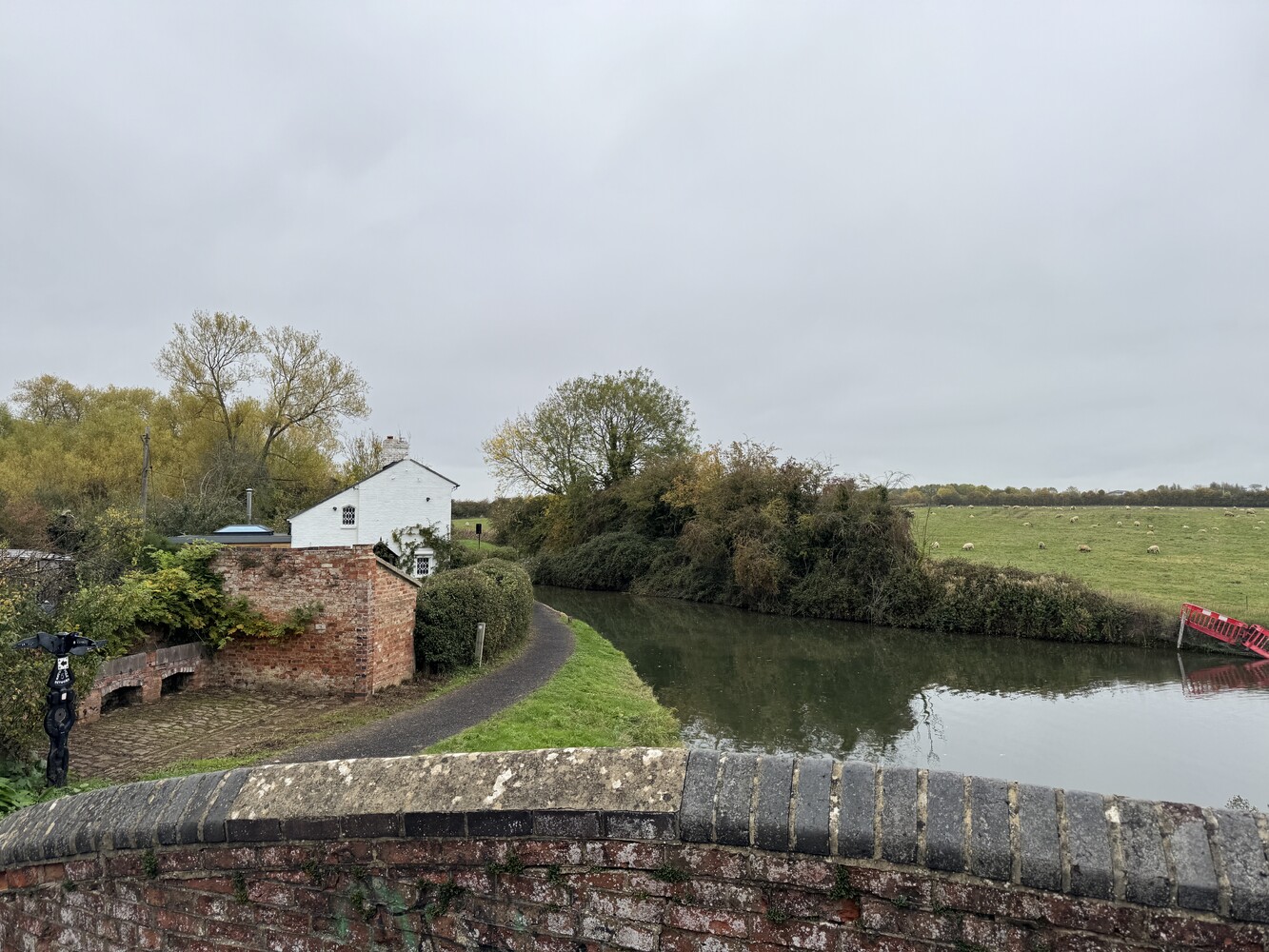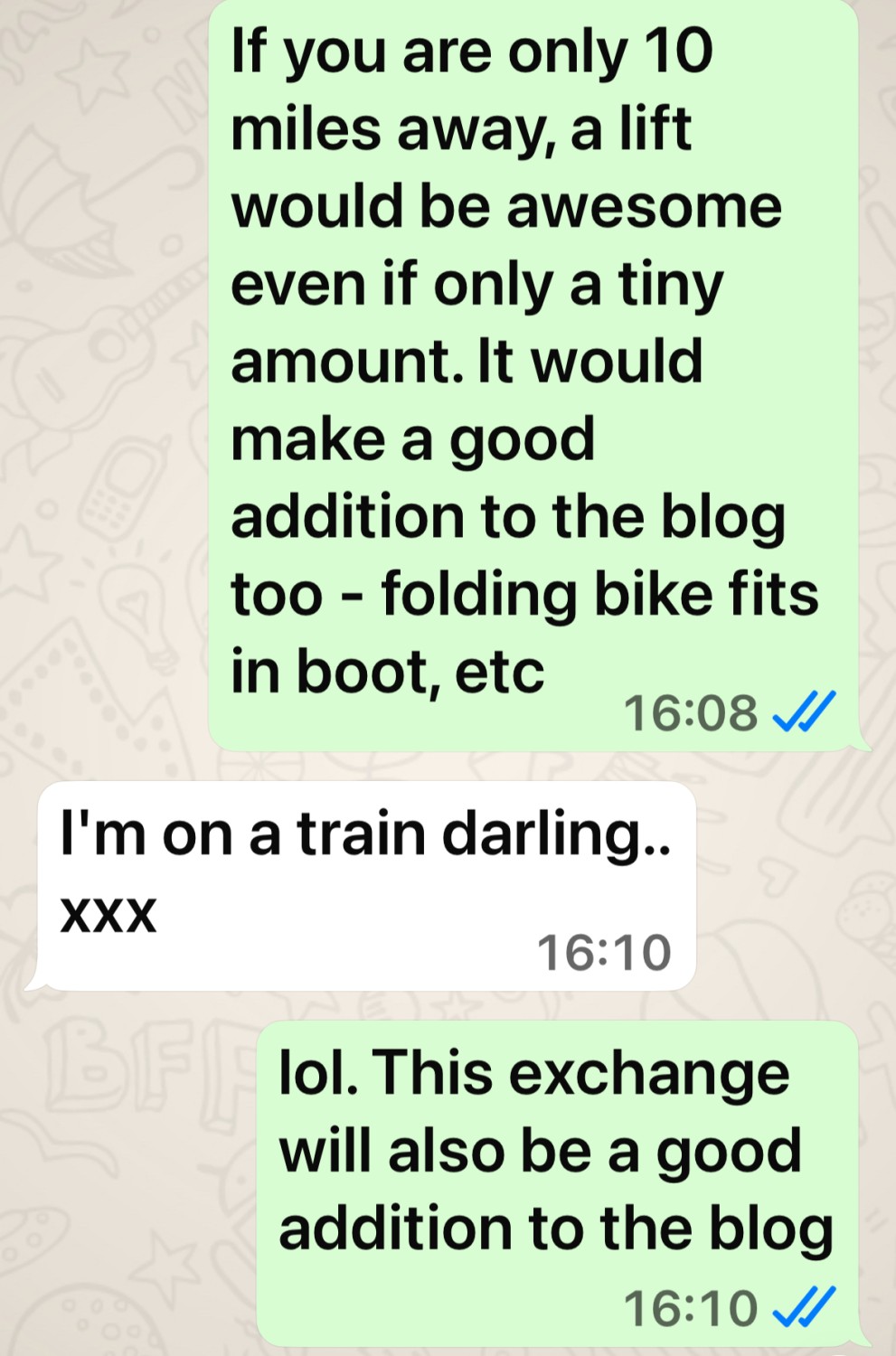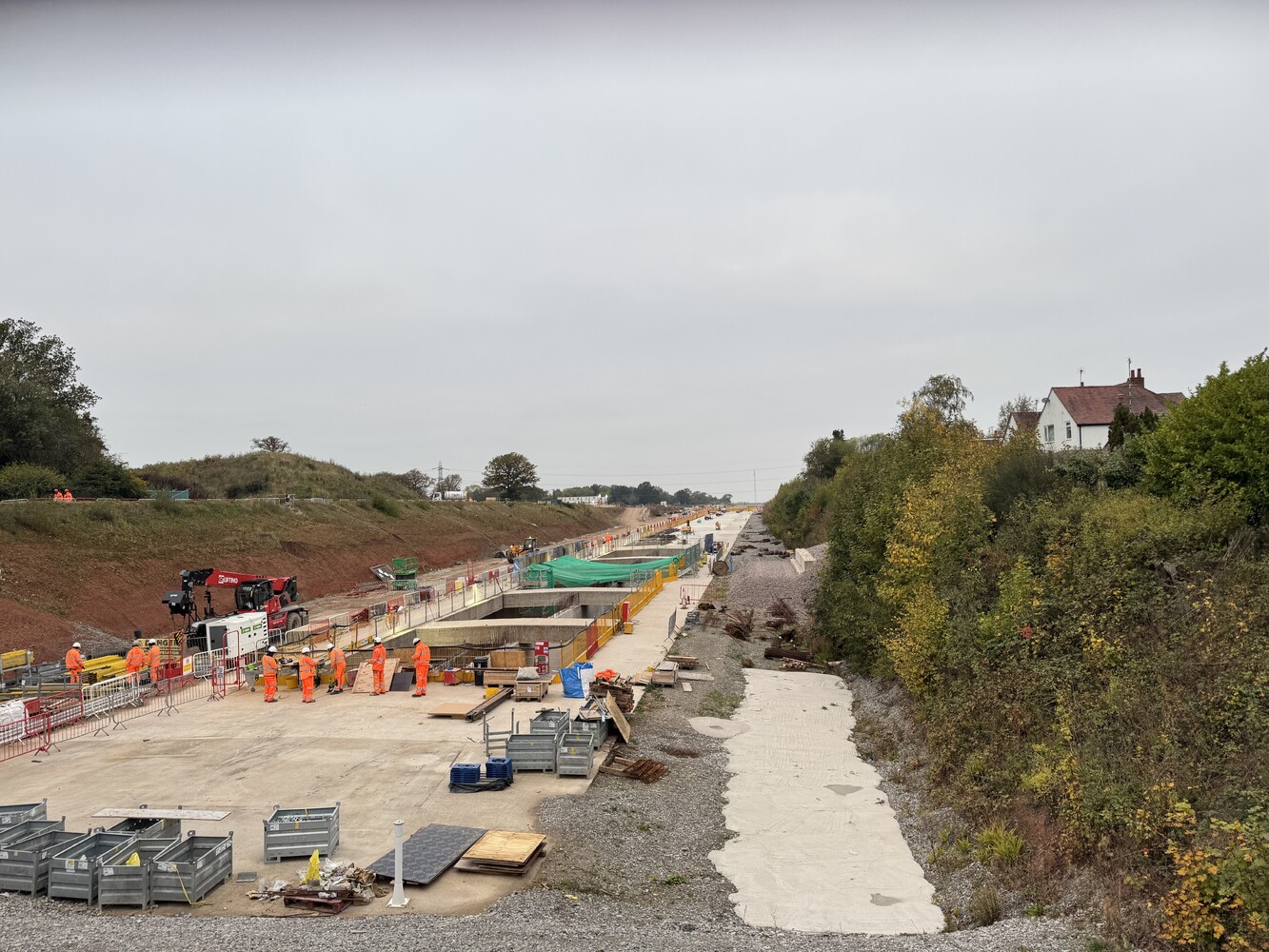Early planning made us realise that the word ‘race’ would need to go. For a start, it had been decided that one of us, Ianto, would travel by canoe. This presented not only an obvious disparity in speed with the other modes (electric cars, trains, buses, and my own e-cycle) but an issue with the planned departure location; despite being much better connected than TRL’s previous head office in Crowthorne, the new office in Wokingham was not located on a canal. Another traveller, Jill (travelling by bus and coach), would also need to start from an entirely different place, being as she was in Wells on the day of departure. The word ‘race’ was dropped. Only me and George (electric car - including a fabulous Microlino) would depart from TRL’s new home.
We would all embark on a shared journey of sorts, but comparisons would be qualitative, not based on time alone.
Revisiting a journey from 2021
The professional media output from the ‘Route to NEC’, with discussions of the pros and cons of the different modes, and lessons learned, can be seen here. I think the media company DTVP has done rather well, with fantastic editing a major part of this from James.
Separately from the official output, I have decided to write the second instalment of a previous blog I completed in 2021. It was one of the most fun things I’ve ever done, but I was always left with a feeling that I’d not really committed to the cycling element of the journey; I had only covered around 40 of the 99 available miles by cycle. “What if I’d had an electric bike?” I mused at the time…
75 is more than 40
The ‘Route to the NEC’ challenge, and the fact that I now DID have an electric bike, presented an opportunity. I could contribute to a shared experience with my TRL friends, and revisit the question I had posed in my last blog, but from an e-cycling perspective: How can we encourage e-cycling between, as well as in, towns and cities?
Before trying to answer this it is worth reminding ourselves why it is desirable. In short, we have three crises that more active travel (as a replacement for car use) can help solve. These are crises of climate, air quality, and obesity. References can be found in that first blog. I have been lazy and not researched whether the numbers that illustrate these crises have improved or gotten worse since 2021, although I suspect the latter. I’d love for people to let me know in the comments.
Anyway, last time, I had cycled for 40 miles over two days, on my wife Kim’s folding Brompton. This time my own Brompton, with extended seat and handlebars, and electrified with a Swytch kit would be used. This time I would be more ambitious, to fit in with the team challenge of the journey. I would attempt 75 miles of cycling, again over two days; Day 1 would involve around 57 miles, and Day 2 around 18.
With hindsight, Day 1 was all about the team challenge, and should be discounted entirely as a serious undertaking. It absolutely levelled me, probably due to me taking nowhere near enough to eat with me. Even with the electric assistance, a couple days after the journey my body basically decided it needed to sleep for two days. As I sit here now finishing this blog (weirdly, on a train, to Birmingham) I still feel depleted, although at least functioning. It was great fun though, and I am glad I did it.
Day 1
On the 14th October, I left my house at 9:30 to cycle the 15 minutes to TRL’s new offices, to meet Dan and Johnny, who were doing filming for the video above. Some b-roll, drone shots and conversations between me at George were filmed. I was then on my way for the only non-cycling part of my route. I would take a train from Wokingham to Reading and then from there to Oxford. Those who use the train services regularly in the South East will not be surprised that this part of my journey was subject to serious delay, as my planned train from Reading to Oxford was cancelled. With this and the slightly-longer-than-planned filming I was already on the back pedal, so to speak. I would leave Oxford train station at around 13:30, not around 12:00 as originally planned.
This late departure would play into my state of mind around half way through the day’s cycling, from Oxford to Warwick. After some interesting non-cycle-friendly stretches and even more lovely views (see pictures) I found myself in Chipping Norton, taking a break for coffee and flapjack. It was just after four o’clock.
Komoot did actually warn me about these

Not the usual place you expect to see a bike designed for cities - such fun though

I looked for people commuting by canoe, but did not see any
I was worried about two things; light, and battery charge. The latter I could cope with. I had, in theory, ample range for the day with two Swytch batteries (one with 20 miles claimed range, and one with 40). I was not naive though; I knew that if I was using anything more than minimum assistance, I might fall short, but I could cope with a little hard ‘real’ cycling near the end. The light was another matter. I had good bike lights, and bright clothing. However I knew that the nearer I got to Warwick (my overnight stay) the busier the roads were likely to be, and asking drivers around rush hour to look out for me, in the dark, was not something I was super keen on.

Shaun's brain after only around 27 miles of cycling
In my state of mind, I had forgotten that Kim did not have our car with her, which is weird, given the last thing I did when leaving the house earlier was get my sunglasses from it.
Anyway. Somehow, I made it. The route mapping app I used (Komoot) did an excellent job in finding mostly quiet country lanes and side roads, and as soon as I got below around 15 miles remaining, I committed to finishing on the bike. I am happy I managed this challenge, but really, it is Day 2, with its 18 mile journey from Warwick to the NEC that is relevant to the practical questions here. As I settled in for what I hoped would be a decent 8 hours of sleep (and it was), I thought about when I might leave the next day.
Day 2
I left at 7. “Best enjoy the ride without time pressure” I thought, knowing I was due on the TRL stand at 10 for more filming and chats with Jill, Ianto, and George.
The journey was generally easier than the first day in distance and in route. Several times I crossed paths with HS2. This likely says something profound about the future of transport, but right now I can't put my finger on that. What I did notice is that there were a lot of lorries.

The future of transport
What, then, are my conclusions? Did the e-bike change anything?
Last time, my conclusions about why we could NOT currently have cycling between towns as a ‘normal’ way of getting about was essentially a lack of good infrastructure and too much intermingling with fast motor traffic. In my opinion these are also the reasons why we cannot have e-cycling as a serious option for this purpose. The electric assistance made it possible to cycle without getting sweaty. That was, basically, the only thing it made easier. The infrastructure and fast traffic problems remained.
The first infrastructure issue (again) was simply that probably 75% of the time, whether I was on a road, a cycle path, or shared path, the surface was awful to cycle on. I am beginning to think that this might be one call to action on which car drivers and cyclists - so often painted in the media as enemies - can join forces. Fewer potholes and fewer substandard bumpy surfaces are needed for the comfort of all.
The second major infrastructure issue was more about when one type met another. Even when I was on the better pavement surfaces, when my road or path came to meet a junction of some kind (especially in Birmingham) I was suddenly at the mercy of luck when it came to how to navigate the now-full-of-cars-and-lorries space around me. Sometimes this meant negotiating a major fast road roundabout. There was one of these around 20 minutes from my destination that I was genuinely at for around 8 minutes before a gap I could use became available; a good portion of this was spent walking in between junctions on the roundabout to see if different entry roads might offer a better joining opportunity. Luckily I had ample battery at this point, having charged my 40-mile-battery to full the night before. ‘EXTREME’ assistance mode was engaged, for the only time on the journey. It still only got me to 15.53mph with assistance, but it got me there QUICKLY, allowing me to push on with leg power as if my life depended on it (which it kind of did).
Another ‘interchange’ issue occurred when I was on a delightful cycle path surface, and arrived at another major roundabout (under a large road near the NEC). My smooth surface turned into basically mud for the five meters required to get to the crossing on one of the exit roads. I then had to wait several minutes, again, just to sprint across the flow of traffic when a gap finally presented itself.
The final issue is one many cyclists will know about; close passes. An example: I was on a country lane rolling down a steep hill at about 25mph towards a right-hand bend at the bottom. A courier company van passed me waaaaaaay too close to the bend and had to cut in front of me as an oncoming car appeared around the bend. The company will remain nameless for now, as I want to contact them and speak to them without them being able to simply blame the individual driver. Note for this reason I am not actually revealing if this really happened on Day 1 or Day 2 , or even where. You’ll need to allow me this artistic licence. What makes this interesting, psychologically at least, is that it was the ONLY close pass I had on the entire journey, and it was enough to make me write about it as a key barrier. I don’t even know if I was actually at any risk - the van likely cut in about two metres ahead of me - but it FELT dangerous (and out of my control). People have a habit of not doing things that feel dangerous (and out of their control).
Where next?
I had so much fun doing this (and can say this with confidence now I am able to stay awake for more than a few hours at a time). What have we learned though?
First, we still need better infrastructure if we are serious about getting more people involved in active travel - especially if we want to have this be an option outside of cities and towns, as well as within them.
Second, we need better bikes to handle the times when that better infrastructure is not perfect. (That new 20-inch wheel electric Brompton is calling to me, so this might just be me convincing myself I need one.)
Third, I have been saying we need better support for active travel everywhere since joining TRL in 2008. My career has tended to focus on other areas of transport safety, but this has always been a vision I've been fascinated by. I'm not sure what the step change will be that makes it happen, but I suspect it will be something that lurks somewhere in a policy discussion, rather than being anything technical, or innovative, or even 'AI'. I also suspect I will have retired long before it becomes a reality everywhere. For now, where are the case study locations that demonstrate how to make this happen? Are there any? Help me out here, please. If you know more about the actual implementation of this kind of change, or you are a local or road authority wanting to do more than install some local cycle paths (although please - still do this) get in touch s.helman@trl.co.uk.
For now, I'll enjoy the view when I can, and remember to carry more carbs.
